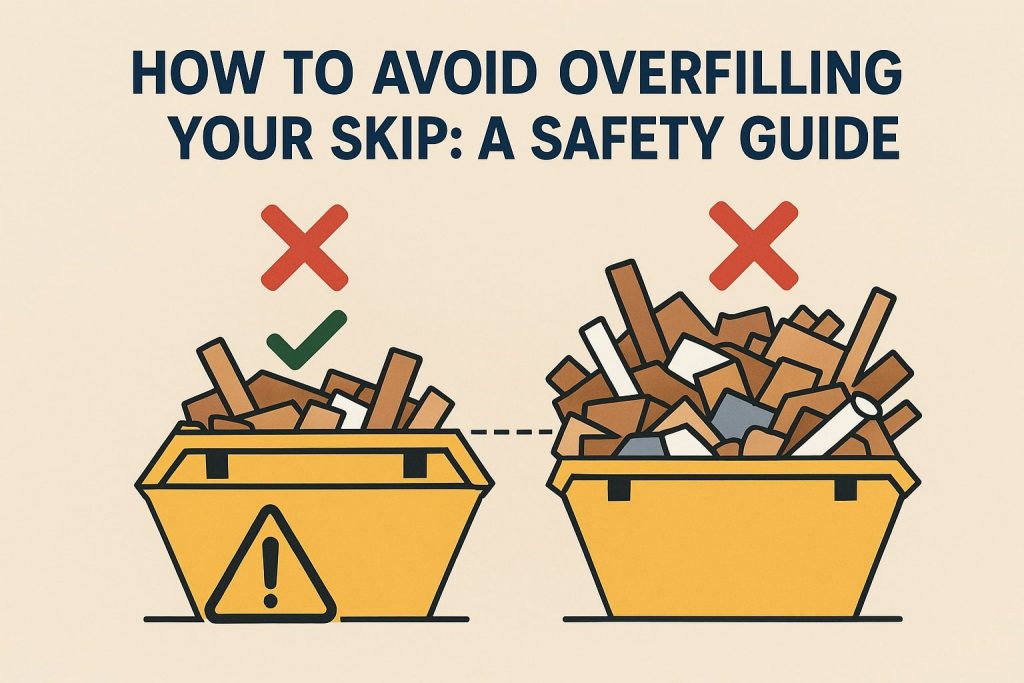
Rachel writes practical guides on skip hire, waste removal, and responsible disposal in the UK. She explains what you can legally put in a skip, how to handle restricted waste, and what it really costs. Her goal is to give clear, up-to-date advice so households and trades stay compliant and avoid fines.
Reviewed by: Skip Hire Team Waste Compliance Manager | Upper Tier Waste Broker Licence CBDU596771

We know, once you start clearing out, it’s easy to get carried away. But overfilling your skip isn’t just a little issue. It can delay collection, lead to extra charges, and even cause serious safety risks.
Let’s walk you through how to load your skip the right way.
The “fill line” or top edge of your skip is not a suggestion; it is a legal and safety boundary.
The trick to stress-free, legal skip loading is strategy. Here’s what works best to make the space count:
We understand jobs sometimes produce more waste than expected, but overloading your skip leads to guaranteed refusal by the driver, resulting in significant hassle and cost for you:
If your skip is nearly full and you still have waste remaining, you have three cost-effective, compliant options:
Unfortunately, no. If the waste is above the rim or protruding, the skip is unsafe to transport and will be refused collection, without exception.
A rough rule is: 1 cubic yard = about 10 standard bin bags. For example, an 8-yard skip holds roughly 80 bags. Still not sure? Just give us a call with details of your waste (e.g., “full kitchen refit,” “heavy rubble,” etc.), and we’ll recommend the right size.
Yes, especially for small skips (4yd, 6yd). You must monitor both. Overloading a skip with extremely heavy materials like rubble can exceed the vehicle’s safe lifting capacity, leading to refusal, even if the load is below the fill line.
No one likes surprise charges or delays. Pick the right skip size from the start and load it safely and if you’re unsure, just ask. We’re here to help every step of the way.
Ready to get started? Book your skip today or speak to our team for friendly advice.
